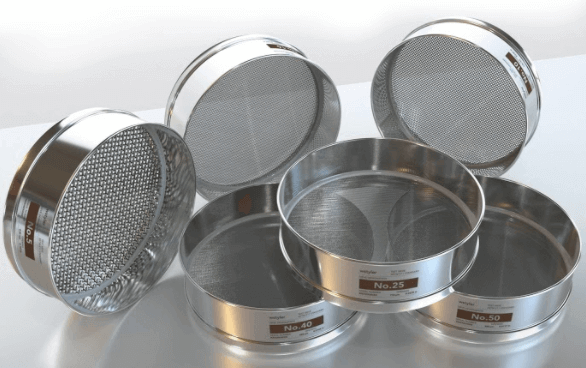What Test Sieves Should I Use With My RO-TAP® Sieve Shaker?
Test sieve analysis is a centuries-old particle analysis technique that several industries utilize to determine the particle sizes in a product and guarantee a certain quality level. Whether you are testing dry material or need to incorporate water to allow for adequate particle movement, there is a test analysis method that can accommodate your needs.
But to ensure your operation consistently yields accurate and repeatable results, you must design a test sieve with the correct specifications. This includes using a sieve size that can be inserted into your sieve shakers.
This probably leaves you curious as to what sieve size is right for your W.S. Tyler RO-TAP® device.
W.S. Tyler has been a prominent leader in the world of particle analysis for over 140 years and strives to learn your operation inside and out to better assist you in yield desirable particle analysis results.
With that, this article will discuss:
- What sieve size is
- Why sieve size is important
- What sieve size you should use with your RO-TAP Sieve Shaker
What Is Sieve Size?
Sieve size is often used to describe either the diameter of a test sieve frame or the mesh count of the test sieve. That said, when determining which test sieve size to pair with a sieve shaker, sieve size refers to the diameter of the frame.
Test sieves generally have a frame diameter of 12", 8", 3", 300mm, or 200mm. To ensure your sieves fit your sieve shaker and produce reliable results, you must employ a sieve size that matches the sieve shaker's profile.
NOTE: While 300mm and 200mm sieves are slightly smaller in diameter, 8" sieves can be paired with 200mm sieves and 12" sieves can be paired with 300mm sieves.
Why Is Sieve Size Important?
The size of your sieves ultimately doesn't have a direct effect on your results. If you have properly calculated your end of sieving analysis and know how long your material should be tested, you will yield accurate and repeatable results.
That said, larger test sieves allow larger sample sizes and larger material to be tested. To put this into perspective, let's say you're testing a sample that has particles reaching 3 inches.
This sample would not be able to be tested using an 8-inch sieve as they are only 2 inches deep. So, in other words, the size of your material and how much material is being tested are what ultimately dictate the size of your sieves.
What Sieve Size Should I Use With My RO-TAP?
Currently, there are 8 Sieve shakers to choose from, including the RO-TAP RX-29, RO-TAP RX-30, RO-TAP RX-94, RO-TAP RX-812, RO-TAP E Pure, RO-TAP E Premium, RO-TAP E Premium Remote, and the EML 315. But the sieve shaker you should use is dependent on the test sieves your industry standards call for, as each sieve shaker is designed to be used with specific sieve sizes.
To put this into perspective, here is a sieve size compatibility guide:
RO-TAP RX-29/RX-30
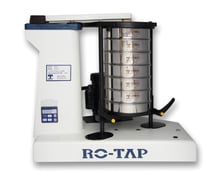
The RX-29 and RX-30 are mechanical sieve shakers that use a circular motion and tapping motion simultaneously to facilitate particle movement through a stack of sieves. Its ability to deliver accurate and repeatable results can be traced back to dozens of industry standards.
The RX-29 is designed to work with 8-inch diameter test sieves. That said, you can employ a specialized conversion kit to enable the use of 6-inch or 3-inch sieves.
The RX-30 is designed to work with 12-inch diameter test sieves; however, there is a 12-inch to 8-inch conversion kit that can be employed for those that already have 8-inch sieves.
RO-TAP RX-94
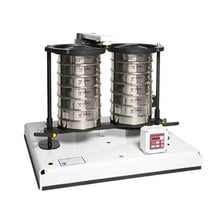
The RX-94 utilizes the same effective motion as the RX-29 to deliver industry-leading results. That said, what makes this sieve shaker unique is that it features a profile that allows for two sieve stacks to be tested simultaneously.
To that end, the RX-94 can only be paired with 8-inch sieves, with no conversion kit currently available for this device.
RO-TAP RX-812
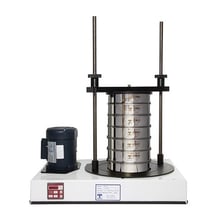
The RX-812 is a unique mechanical sieve shaker because it relies solely on a rotating motion with no hammer tapping. For this reason, this device is designed to be used with coarse material, such as aggregate, 80 mesh and up.
That said, it is called the RX-812 because it can be paired with either 8-inch sieves or 12-inch sieves out of the box without the need for a conversion kit.
RO-TAP E Pure

The RO-TAP E Pure is an electromagnetic sieve shaker that delivers reliable sieve shaker results in an easy-to-use package. This particular device offers two amplitude levels that accommodate either coarse or fine particles and is designed with dry material testing in-mind.
With that, this device can only be paired with 8-inch sieves.
RO-TAP E Premium
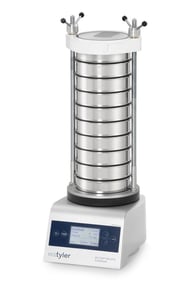
The RO-TAP E Premium is much like the Pure model; however, this unit offers a control panel that allows users to select a custom sieving amplitude and interval. This unit also features an innovative dampening system, making it the quietest RO-TAP model.
Like the Pure model, the RO-TAP E Premium is designed to be used with 8-inch sieves only.
RO-TAP E Premium Remote
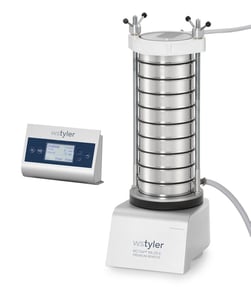
The RO-TAP E Premium Remote offers the same testing customization as the Premium; however, it employs the use of a remote panel that is separate from the unit itself. This allows users to conduct a wet sieve analysis without damaging the electrical components of the control panel.
Again, the RO-TAP E Premium Remote is designed to test particles with 8-inch sieves.
EML 315
The EML 315 is an electromagnetic sieve shaker that uses a magnetic charge to pull and release a spring mechanism in an effort to facilitate particle movement throughout a sieve stack, much like the RO-TAP E product line. The biggest difference between the EML 315 and the RO-TAP E models is that the EML 315 was designed for use with 12-inch sieves.
NOTE: The RO-TAP E models can house six full-height sieves with a full-height pan or 13 half-height sieves with a half-height pan. The EML 315 can house four full-height sieves with a full-height pan, six full-height sieves with a half-height sieve, or eight half-height sieves with a half-height pan.
Better Understand Mesh Conversion To Ensure You Design the Ideal Sieve Stack
When deciding which sieve size to use with your sieve shaker, the term sieve size refers to the diameter of the sieve's frame. As there is not one universal sieve size, it is essential that you understand what sieve diameter your sieve shaker is designed for.
Once you determine what sieve size you will use, the next step is to calculate the mesh count of the sieves in your stack. That said, just like 200mm and 8-inch sieves are essentially the same sizes, there are mesh counts that translate from ASTM and ISO standards.
This is why you must understand how to convert your desired mesh count.
Having helped customers navigate the particle analysis industry for over 140 years, W.S. Tyler is here to ensure you understand what mesh count is right for you no matter what industry standard is used.
To learn everything you need to know about ASTM and ISO mesh conversions, refer to the following article: Understanding the Standard Metric and US Sieve Cloth Conversion Table.
About Ronnie Brown
Ronnie is the Content Writer for W.S. Tyler and has four years of experience as a professional writer. He strives to expand his knowledge on all things particle analysis and woven wire mesh to leverage his exceptional writing and graphic design skills, creating a one-of-a-kind experience for customers.
